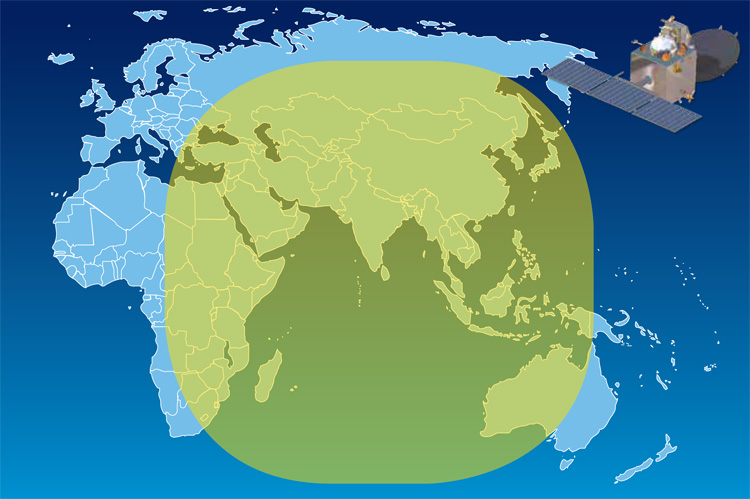GAGAN for More Efficient GA/BA Operations
Many of the aircraft in India are already capable of using GAGAN and some OEMs have offered to carry out updates for GAGAN compatibility, without cost


The recently issued revised draft National Civil Aviation Policy (NCAP 2015) envisages wide use of indigenously developed GPS Aided Geo Augmented Navigation (GAGAN) in the coming years, which would enable GA/BA aircraft make Cat I approaches at most of the under-served/un-served small airfields, located in remote areas of the country. The launch of GAGAN, this year, puts India among the list of four elite nations in the world to use satellite-based navigation system.
The draft NCAP 2015 also speaks of mandating only GAGAN enabled aircraft to be newly registered in India from April 1, 2017, onwards. This mandatory requirement should have been envisaged at least three years ago when the Ministry of Civil Aviation (MoCA) issued a detailed Civil Aviation Policy in 2012 and, parallel consultations held with aircraft manufacturers to optimally use the upcoming GAGAN technology. However, it is better late than never and all possible steps should be taken to quickly integrate aircraft operations in India with GAGAN.
GAGAN Technology
Starting from very early aviation days of pilot and navigator using ‘familiarity with terrain in good visibility conditions’ to evolution of ‘aeronautical charting and analysis’; the pilots now have the facility of precise and computerised navigation available through the geospatial technology (GST) offered by GAGAN. Paper charts have been replaced by electronic flight bags (EFB) with electronic terrain obstacle data (ETOD). The end-users of GST technology in aviation, offered by GAGAN, would, inter alia, include instrument procedure designers, aircraft performance engineers, terrain awareness warning system manufacturers, airport surface – map display manufacturers, airport planning organisations, airport security providers and airport emergency services providers.
Everyone is looking forward to DGCA supporting this leap in technology by coming up with a timebound and hassle-free policy to enable the Indian aircraft operators to indigenously developed GAGAN technology. GAGAN would prepare India to seamlessly move into the top three nations in the aviation world, globally.
When it comes to use of GAGAN technology for aircraft operations, most of the airlines operate larger aircraft that are already compatible with ILS/NDB approaches available at airfields connected by scheduled services. Therefore, GAGAN technology doesn’t offer them any immediate benefits to airlines other than enabling landings from non-ILS end. It is the GA/BA industry, operating smaller aircraft and connecting remote/interior airfields in the country, that would be the biggest beneficiary of GAGAN technology. However, from a larger perspective, GAGAN technology is bound to benefit the entire aviation industry during the future times. It is from this long-term perspective that we all need to work for fast-tracking measures for fully utilising GAGAN technology and maximising the below-mentioned benefits:
Benefits of GAGAN
- Enhanced capability to operate from remote/smaller airfields, especially during adverse weather conditions. Usage of non-ILS runway ends of airfields, when it becomes necessary.
- Reduced separation standards which allow increased capacity in a given airspace, without increased risk.
- More direct en route flight paths.
- Fuel savings. Pilots have reported savings of 5 per cent.
- Fuel savings also results in reduced carbon emissions.
- New precision approach services.
- Smaller and simplified equipment on board the aircraft.
- Significant government cost savings due to the elimination of maintenance costs associated with older, more expensive ground-based navigation aids (to include NDBs, VORs, DMEs, and most Category 1 ILSs).
- Immediate access to greater number of airports enhancing remote air connectivity.
GAGAN covers a vast area, extending from most of Australia in the east to middle of Africa. In the north-south direction, it covers most of China/East Europe in the north to entire Indian Ocean in the south.
Getting aircraft GAGAN enabled
Many of the aircraft in India are already capable of using GAGAN and some OEMs have offered to carry out updates for GAGAN compatibility, without cost. However, in case of most OEMs, for aircraft older than five years, the cost to upgrade would vary depending on the existing equipment on board, as modifications need to be done to GPS, FMS, flight director, etc. It is here that government needs to step in and consider granting soft loans to small GA/BA operators to finance the upgrades. The Airports Authority of India (AAI) should also tie up with OEMs to bring down the cost of upgrades.
Crew Training
Additional crew training for using GAGAN would be minimal as most of the crews get trained on CAT 1 approaches and also undergo refresher course regularly.
DGCA’s Role
DGCA has been well aware of GAGAN having been operational since July this year and it needs to work very quickly on coming up with CAR outlining regulatory requirements for approval of aircrafts and crew for flying GAGAN approaches. Pilots having undergone training for American WAAS or European EGNOS should be facilitated to get GAGAN letter of approval. The Ministry of Civil Aviation has spent nearly Rs. 800 crore to set up this infrastructure. There are only three other SBAS networks in the world, in US/Europe/Japan that are similar to GAGAN. Everyone is looking forward to DGCA supporting this leap in technology by coming up with a time-bound and hassle-free policy to enable the Indian aircraft operators to indigenously developed GAGAN technology. GAGAN would prepare India to seamlessly move into the top three nations in the aviation world, globally.





